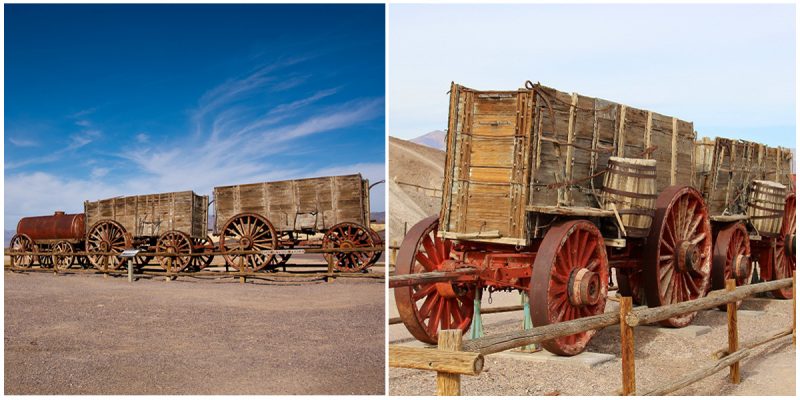The discovery of borax (or “white gold” as it is called) north of the mouth of Furnace Creek was made in 1881 by Aaron and Rose Winters, whose holdings were immediately bought by William T. Coleman and Francis Marion Smith for $20,000. They opened the way for “large-scale” borax mining in Death Valley.
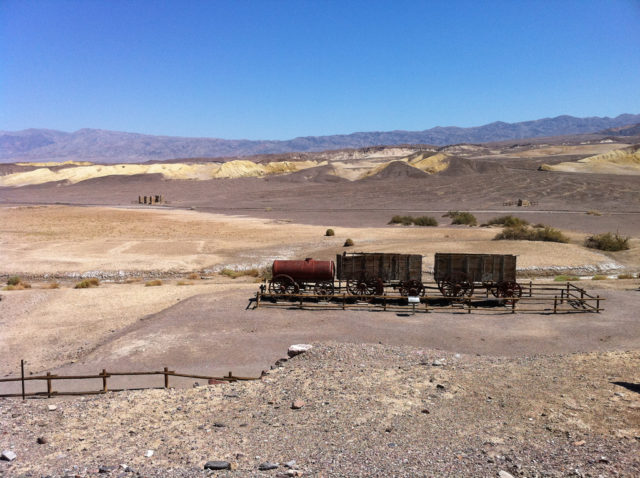
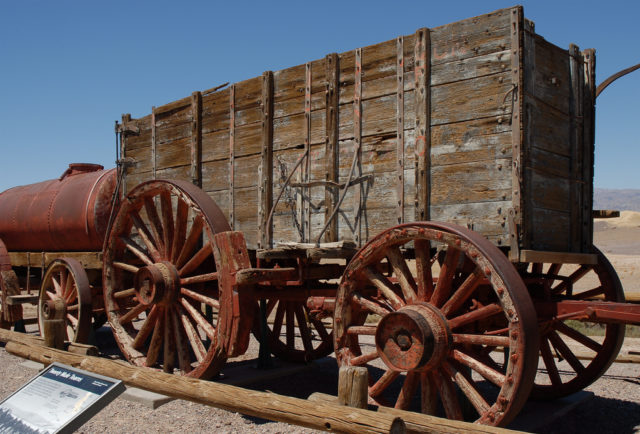
The operation became famous because of the use of large mule teams and double wagons. The “Twenty Mule Team Wagon” was built for transport to the railroad at Mojave, which is 165 km away from the Harmony Borax Works. To carry the borax out of the valley, they needed to carefully design the wagons, as it was a heavy load. The driver “Skinner”, had to handle his mules in all conditions. He was a veterinarian, a blacksmith, and a repairman when something had to be fixed on the wagon. The drivers assistant “Swamper” had numerous duties. Going up grades he walked along the teams. On downgrades, he handled the brakes on the rear wagon. He also was in charge of making the camp, hooking and unhooking the mules, and feeding them.
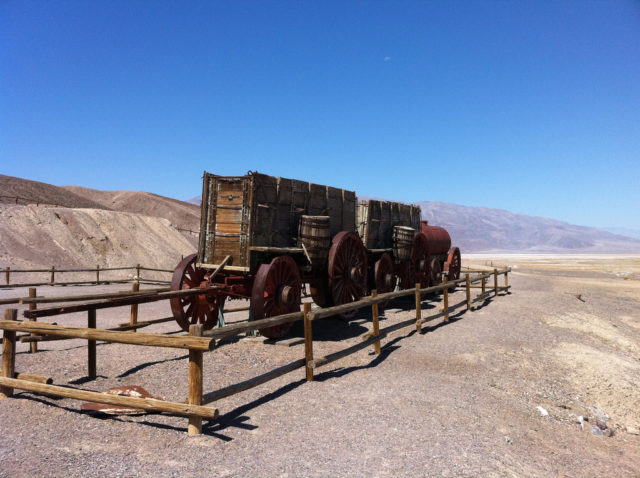
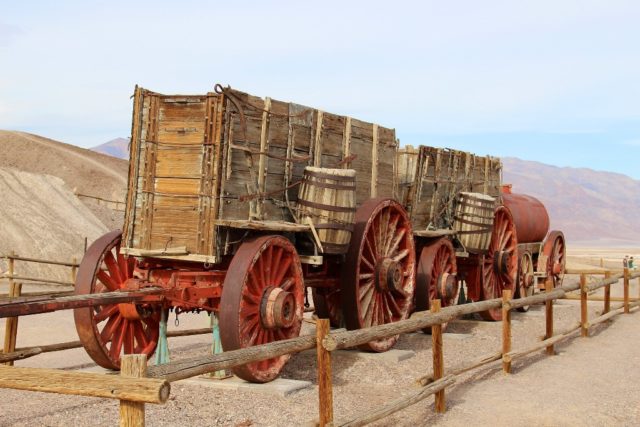
The type of borate being exploited on the salt flats of Death Valley was ulexite, in the form of “cotton balls” that were scraped off the salt pan and then refined by evaporation and crystallization. During the summer months, when it was too hot to crystallize borax in Death Valley, a smaller borax mining operation shifted to his Amargosa Borax Plant in Amargosa, near the present community of Tecopa, California.
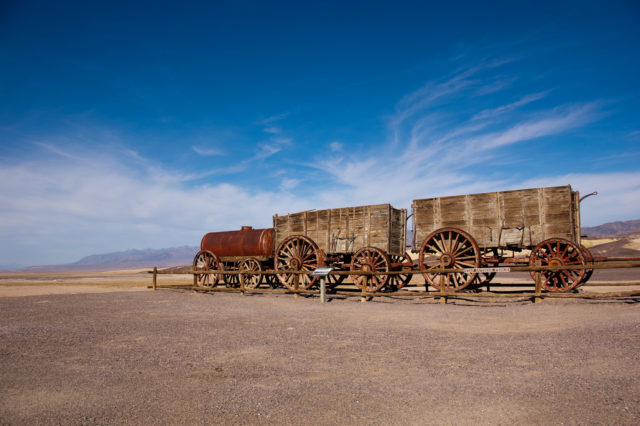
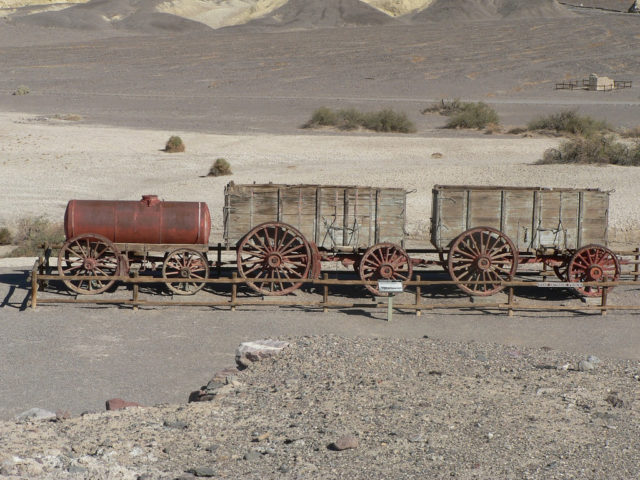
The Harmony Works remained under Coleman’s operation until 1888. The discovery of Borax in other parts of Death Valley eventually forced Harmony Borax Works out of business and operated for only 5 years. William Coleman’s original holdings in the works were subsequently acquired by Frank M. “Borax” Smith in 1890, to become the Pacific Coast Borax Company with the 20 Mule Team Borax brand. Activity at Harmony Borax Works ceased with the development of the richer Colemanite borax deposits at Borate in the Calico Mountains, where they continued until 1907.
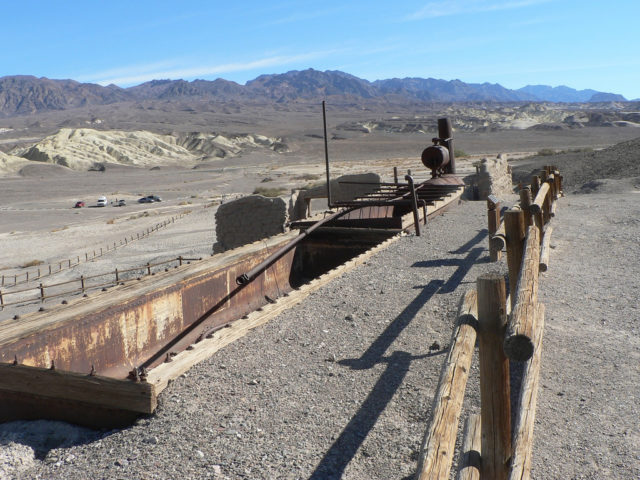
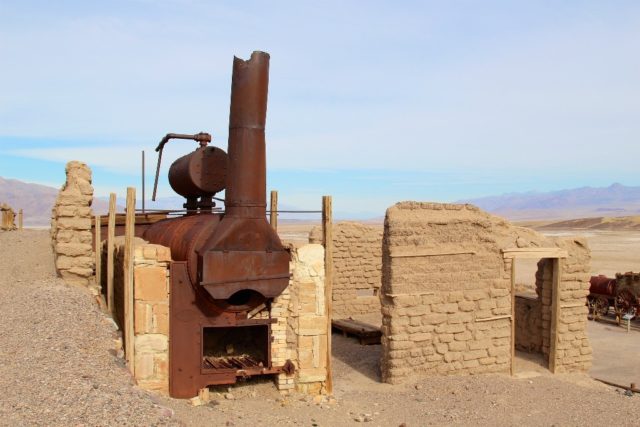
The Harmony Borax Works was placed on the National Register of Historic Places on December 31, 1974. They are part of the National Park Service historical site preservation program in Death Valley National Park.
